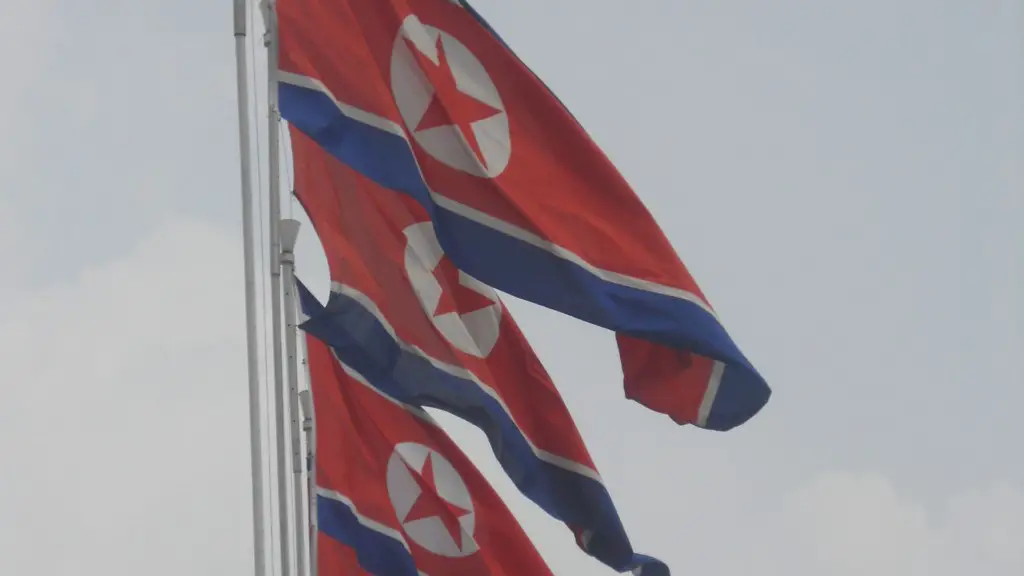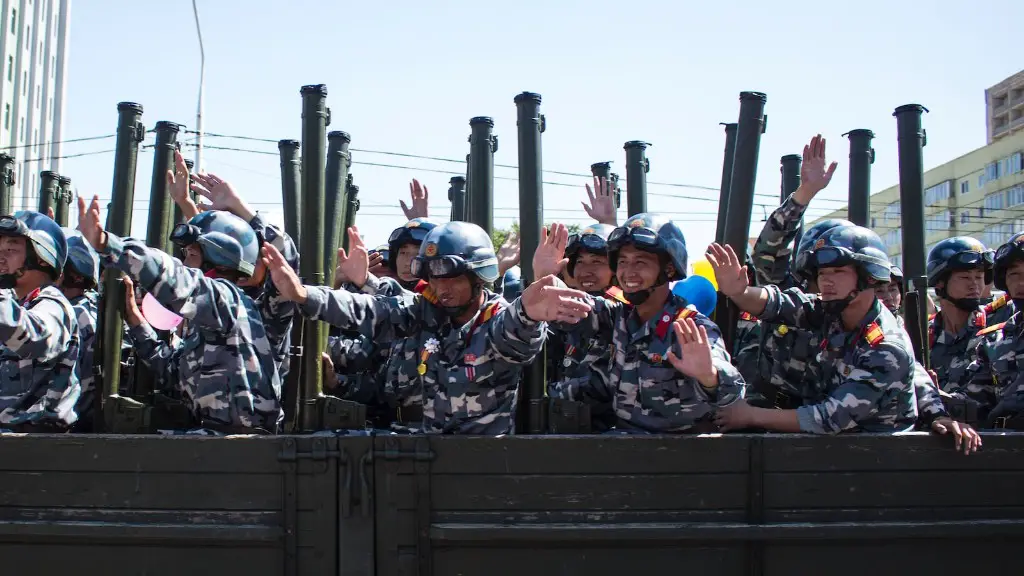Overview
The strained relations between the United States and North Korea is one of the most complicated and long-standing geopolitical issues of the present. There is a long and complicated history which has been marred by threats of weapons, military rhetoric and diplomatic posturing. The current decade has witnessed a nerve-wracking escalation of tensions between the two countries, with the majority of major disagreements centering around North Korea’s weapons program. The United States has taken a strong stance against North Korea’s nuclear proliferation and has repeatedly warned against its development of nuclear weapons.
Origin of Tension
The source of the tension between the US and North Korea can be traced back to the end of World War II, when the US and the Soviet Union agreed to temporarily divide the Korean peninsula into two zones. The northern part was occupied by the Soviet Union, while the southern part was occupied by the United States. After the creation of the North Korean government in 1948, North and South Korea quickly became divided along ideological lines, with North Korea leaning towards communism and South Korea embracing democracy. The Cold War quickly followed, and tensions between the US and North Korea ramped up as the US sought to maintain peace in the region. After North Korea’s invasion of South Korea in 1950, the US sent forces to aid South Korea in the Korean War.
International Sanctions
In response to its growing nuclear program and continued defiance of global diplomacy, North Korea has been the recipient of a series of international sanctions. These sanctions were led by the United States and have targeted a number of industries, including banking, shipping and technology. These restrictions have been condemned by both North Korean and Chinese officials, with Chinese President Xi Jinping calling them “unreasonable”. The sanctions are seen as hypocritical by some, as the US has a number of nuclear weapons of its own, and there is evidence that the US has developed more weapons since the passage of the sanctions.
Stalled Diplomacy
The United States has attempted to rein in North Korea through diplomatic means, offering numerous incentives and diplomatic discussions. However, negotiations have largely been unsuccessful, with the US’s requests for North Korean denuclearization being rejected by North Korean officials. US President Donald Trump attempted to reach a historic agreement with North Korea in 2018 via a summit in Singapore, but the talks ended without a deal.
Military Threats
Tensions between the US and North Korea escalated dramatically in 2017, when the North Korean government began testing a series of intercontinental ballistic missiles (ICBMs) capable of reaching the United States mainland. In response to these tests, US President Donald Trump threatened military action against North Korea and threatened “fire and fury” if North Korea persisted in its ICBM testing. The US has also stationed military forces in neighboring countries, including South Korea and Japan, as a show of force towards the North Korean government.
The Humanitarian Crisis
The tension between the US and North Korea has had a profound effect on the lives of the North Korean people. The country is one of the most repressive in the world, with a record of human rights abuses that have been extensively documented by human rights organizations. The sanctions imposed by the US and its allies have further depressed the North Korean economy, making life more difficult for the average citizen. In addition, the constant threat of war has resulted in a heightened sense of insecurity and a lack of economic opportunities.
Rising Regional Tensions
The US-North Korea tension has also had ramifications beyond their borders, with both South Korea and China becoming increasingly involved in the affairs of the peninsula. Both countries have sought to de-escalate and stabilize the situation, with South Korea in particular playing a major role in negotiations between the US and North Korea. In addition, China is North Korea’s closest ally and has regularly provided economic aid and diplomatic support to the North Korean government.
The Possibilities for Progress
Despite the ongoing tension between the United States and North Korea, there is still the possibility of progress. An increasing number of experts believe that a path to diplomacy still exists, and that a successful agreement between the two countries could open up the potential for a lasting peace. However, it is unclear what a successful agreement would look like, as both sides remain far apart on the issues of denuclearization, human rights and economic cooperation.
North Korea’s Strategic Options
North Korea has a number of strategic options available to them when it comes to their relations with the United States. They can continue their current path of belligerence and provocation, which will likely lead to more sanctions and will increase the possibility of military conflict. Alternatively, they could take a more conciliatory approach and attempt to engage in meaningful dialogue with the United States, though this could potentially lead to North Korea conceding too much in the eyes of their own citizens. North Korea could also attempt to shift the focus away from their relationship with the United States and toward building a better relationship with their East Asian neighbors such as South Korea or Japan, though this option could potentially anger the United States.
Implications for the Region
The current tension between the US and North Korea has far-reaching implications for the region, as the potential for conflict could lead to major disruptions in the global economy. The region is already facing a number of security issues, including the continued presence of US troops in South Korea, a territorial dispute between China and Japan, and escalating tensions between North Korea and its neighbors. Moreover, the uncertainty surrounding the future of US-North Korea relations has the potential to fuel further provocations and complicate the region’s already delicate diplomatic situation.
The Risk of War
The ongoing tension between the US and North Korea has the potential to culminate in armed conflict. The US has made it clear that they do not consider military action as off the table, and the US military is actively preparing for a potential conflict. North Korea has also demonstrated its willingness to use violence as a means of achieving its objectives, and has engaged in military exercises as a show of strength and defiance against the United States. Without a successful diplomatic solution, the risk of military conflict is an ever-present one.
Conclusion
It is clear that the tension between the United States and North Korea is one of the most complex and long-standing global geopolitical issues. Despite numerous diplomatic efforts, the two countries remain far from reaching an agreement, and the risk of armed conflict is ever-present. The situation is further complicated by the presence of international sanctions, regional tensions, and differing strategic options available to North Korea. A successful agreement between the US and North Korea is essential in order to bring stability to the region, and all parties must take steps to ensure that the situation does not devolve into chaos.



